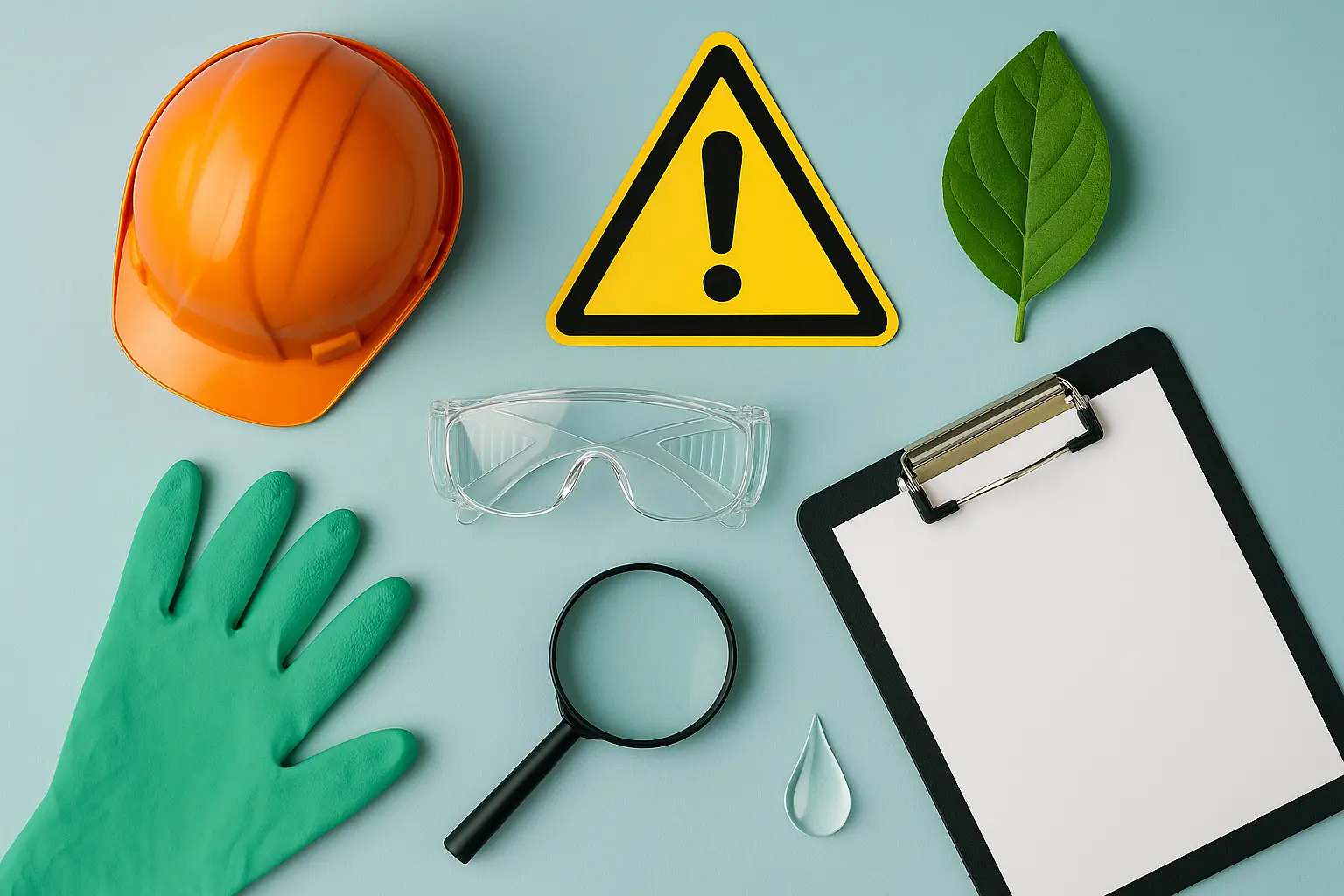Industrial Hygiene Certification
The Industrial Hygiene Certification service is a critical component in ensuring worker safety and compliance with environmental regulations. This certification focuses on identifying, evaluating, controlling, and preventing health risks due to exposure to hazardous agents at the workplace.
In this context, industrial hygiene involves assessing workplaces for potential hazards such as chemical substances, physical factors (e.g., noise), biological agents, and ergonomic stresses that could adversely affect employee health. The goal is to mitigate these risks through engineering controls, work practices, administrative policies, and personal protective equipment (PPE).
The primary audience for industrial hygiene certification includes quality managers, compliance officers, R&D engineers, and procurement personnel who are responsible for ensuring safety standards and regulatory compliance across various industries.
Industrial Hygiene Certification is essential in sectors such as manufacturing, construction, healthcare, and chemical processing. For instance, a manufacturing facility may require regular assessments to ensure that the use of solvents does not exceed safe limits. Similarly, healthcare settings must monitor for risks from biological agents like viruses or bacteria.
The certification process typically involves several steps including initial site visits, data collection, risk assessment, and implementation of control measures. Compliance officers play a pivotal role in overseeing these processes to ensure that all necessary protocols are followed.
One key aspect of industrial hygiene is the use of personal protective equipment (PPE). This includes respirators, gloves, goggles, and other garments designed to protect workers from harmful substances or environments. The selection of appropriate PPE depends on the specific hazards present in a given workplace. For example, workers exposed to high levels of noise would benefit from earmuffs or earplugs.
Another critical component is ventilation systems which can be used to remove airborne contaminants. Proper design and maintenance are crucial for effective performance. Additionally, engineering controls such as local exhaust ventilation hoods can capture pollutants before they reach the worker. Administrative measures like rotating job tasks may also reduce exposure risks by spreading out hazardous activities.
While industrial hygiene certification provides essential protections against workplace hazards, it is important to note that no single measure guarantees absolute safety. Continuous monitoring and updating of procedures are necessary as work environments change over time or new technologies emerge.
Scope and Methodology
| Aspect | Description |
|---|---|
| Initial Site Visit | Involves detailed examination of the workplace, including inspection of equipment, materials, and processes. |
| Data Collection | Includes gathering information about potential hazards through observations, interviews with employees, and analysis of historical data. |
| Risk Assessment | Analyzes identified risks to determine their likelihood and severity. This helps prioritize interventions needed most urgently. |
| Control Measures Implementation | Develops strategies aimed at reducing or eliminating workplace hazards based on findings from assessments. |
The methodology employed ensures that all relevant factors are considered when evaluating the safety of a work environment. By following this structured approach, we can provide accurate certifications reflecting current conditions accurately.
Quality and Reliability Assurance
At our laboratory, quality assurance plays a paramount role in delivering reliable results for industrial hygiene certification. We adhere to international standards such as ISO 9001:2015 which sets stringent requirements for managing processes and ensuring consistent outcomes.
To maintain high levels of reliability, we employ experienced professionals trained specifically in industrial hygiene practices. Our team members undergo regular training updates to stay current with latest developments within the field. This dedication ensures that all testing procedures adhere strictly to recognized guidelines.
Reliability is further enhanced through rigorous quality control measures implemented throughout each project lifecycle. From sample collection to final reporting, every stage follows standardized protocols designed to minimize errors and ensure accuracy.
We also utilize advanced instrumentation capable of detecting even trace amounts of hazardous materials. This enables precise measurements that contribute significantly towards establishing accurate baseline levels against which future improvements can be measured.
International Acceptance and Recognition
- The services provided are recognized globally under various international standards including OSHA (Occupational Safety & Health Administration), EU Directive 89/391/EEC, and EN ISO 45001.
- Our certifications hold significant weight in numerous countries around the world due to their alignment with these widely accepted frameworks.
- Recognition extends beyond mere acceptance; our clients enjoy enhanced credibility among stakeholders both locally and internationally when they can demonstrate adherence to such high standards of safety and hygiene.
- This global recognition translates into increased trust from investors, customers, and employees alike, contributing positively towards overall business success.
The widespread adoption of these international standards underscores the importance placed on industrial hygiene by regulatory bodies worldwide. By meeting these benchmarks through our services, businesses not only protect their workers but also contribute to sustainable development goals set forth by organizations like the United Nations.





